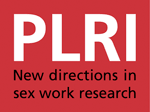gender
This short fact sheet outlines the key issues and HIV risks associated with sex work in many parts of the world including: high rates of STIs and HIV; poverty; low educational level; limited access to healthcare services and prevention commodities; gender inequalities; social stigma and low social status; drug or substance use and; a lack of protective legislation and policies. It suggests that the following types of HIV programmes have been successful in meeting sex workers’ needs: An article in press for the Journal of Men’s Health. Men, in general, remain less likely than women to seek medical care, and

